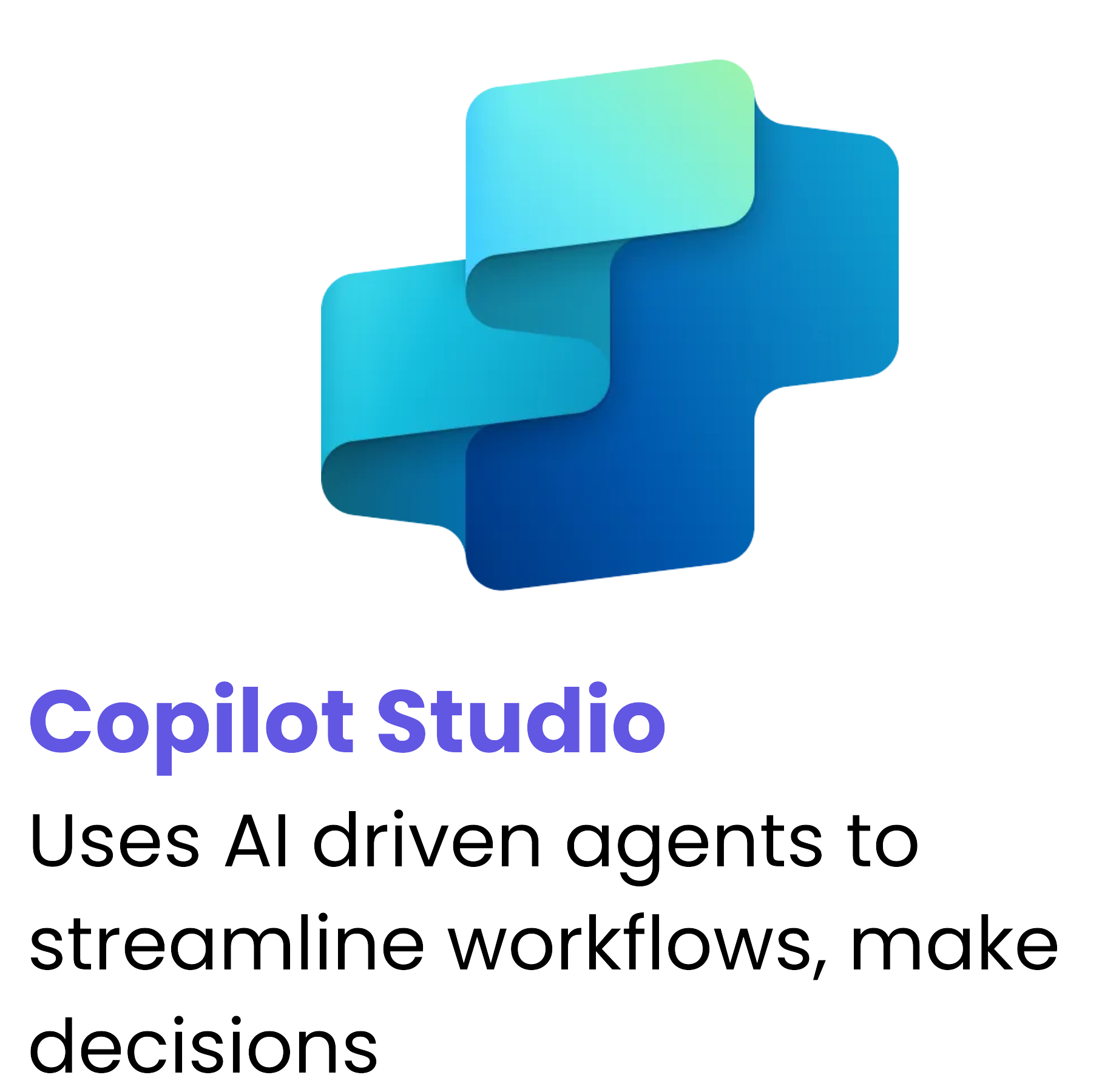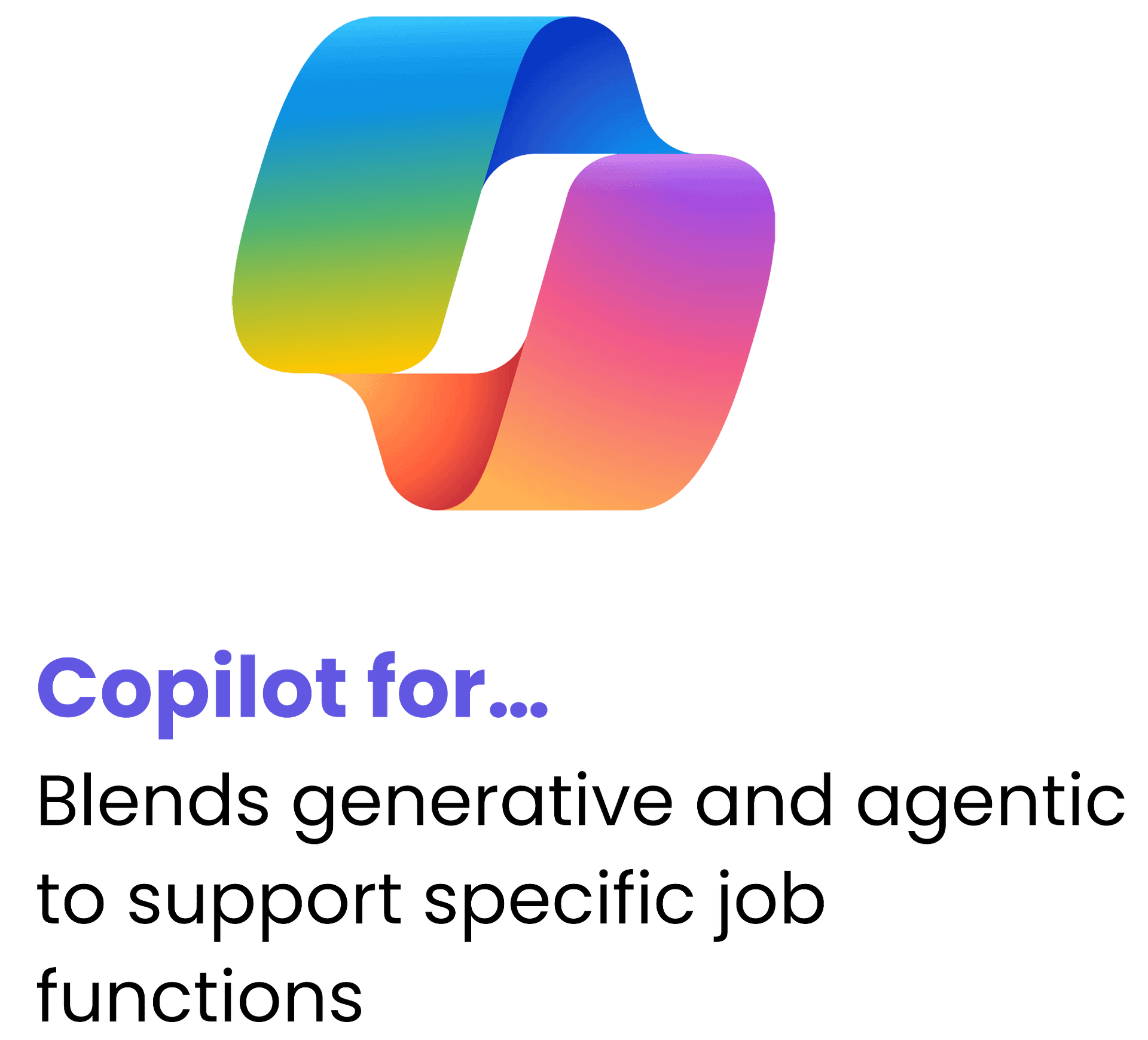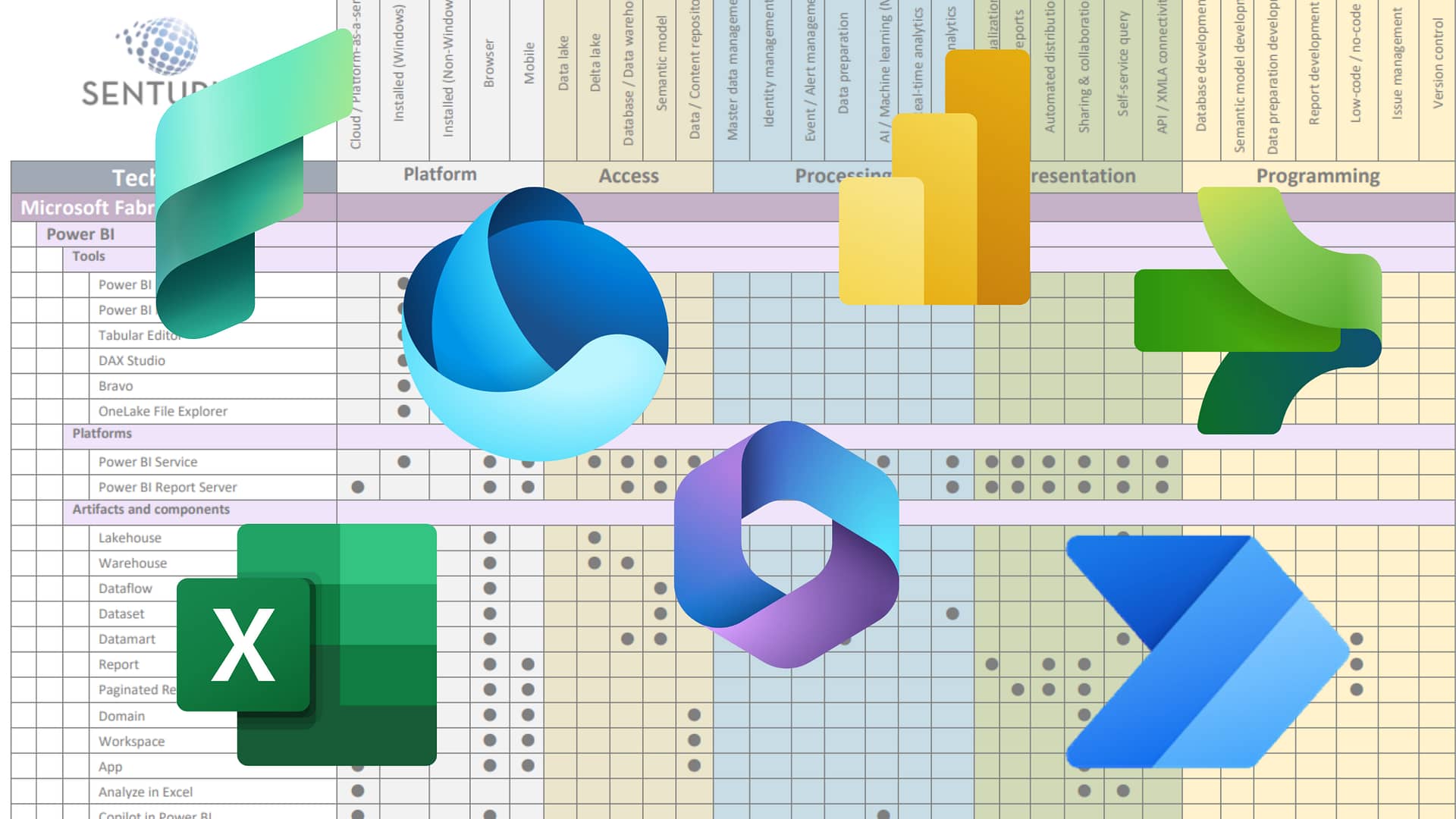Sorting out Microsoft Copilot for Office 365, Role-based Copilots, Copilot Studio and Power Automate
The term “copilot” has become the go-to label for AI tools designed to assist—not replace—human work. From Atlassian’s Copilot for Confluence to Salesforce’s Einstein Copilot, the metaphor signals that AI provides a supportive role.
No one has embraced the term more fully than Microsoft. Copilot pops up across their ecosystem, and it’s led to some confusion: Is Microsoft Copilot a product, a feature, a platform?
The short answer: it’s all of the above. Rather than a single tool, Microsoft Copilot is a family of AI-powered experiences—some embedded in apps like Word and Excel, others designed for specific roles or workflow automation.
To make the most of this growing ecosystem, it helps to understand where these Copilots shine, how they differ, and where they overlap. This primer summarizes four core offerings:
- Microsoft 365 Copilot
- Copilot Studio
- Power Automate
- Role-based Copilots
By the end, you’ll understand what each does best—and how to use Microsoft’s AI tools strategically, whether you’re a business leader focused on productivity or an IT pro driving enterprise automation.
COPILOT: SAME NAME, DIFFERENT FLIGHT PATHS
 If you’ve used Word, Excel or PowerPoint lately, you’ve probably seen Microsoft 365 Copilot making suggestions (welcome or not) for improving your content. That’s the generative side of AI in action. Then there is the agentic Copilot (enter confusion): In addition to its well-established workflow automation tool Power Automate, Microsoft introduced Copilot Studio, an AI platform also aimed at assisting… workflows. Not even a year ago, Microsoft (and many of us in the industry) were pushing Power Automate, its RPA solution, as the go-to for automation. |
And, during the past year, Microsoft also introduced a number of Copilots tailored to specific business functions. Solutions such as Copilot for Finance and Copilot for Sales blend generative and agentic AI to deliver role-specific capabilities and insights.
Let’s look more closely at how each Copilot functions—so you can choose the right Microsoft AI tool for the task at hand.
GENERATIVE AI: MICROSOFT 365 COPILOT
 Microsoft 365 Copilot is a productivity booster for Microsoft Office users. It generates copy and other content. It also summarizes documents and data within the Office suite. It is built into Word, Excel, PowerPoint, Outlook, Teams, etc. |
Here are some examples of ways Microsoft 365 (M365) Copilot can be used in the Office suite to enhance productivity:
- Word: Draft reports, contracts or summaries instantly.
- PowerPoint: Turn documents into presentations with AI-generated slides.
- Outlook: Summarize email threads and draft professional responses.
- Teams: Get AI-generated meeting recaps and action items.
- OneNote: Organize notes and extract key takeaways automatically.
- Excel: Perform lightweight analysis
- Generate simple formulas, analyze trends and create visual insights.
- Analyze business data and get insights without requiring deep analytical skills.
- Help finance teams quickly identify trends and risks.
Limitations of Microsoft 365 Copilot
- Limited to individual productivity. M365 Copilot boosts personal efficiency; it doesn’t extend to automating tasks that can benefit the broader organization.
- It won’t do tasks for you. M365 Copilot won’t take action beyond content creation and summarization.
- Requires human review. M365 Copilot may hallucinate. Even if you fed Copilot good data, it may generate incorrect or misleading information because AI models predict words based on patterns, not factual knowledge. Like news sources and social media, always verify AI-generated content.
AGENTIC AI: COPILOT STUDIO FOR BUSINESS AUTOMATION
 Copilot Studio is a platform for building AI-driven assistants (or “agents”) that can automate workflows and make simple decisions. It integrates with a variety of enterprise applications, including both Microsoft and third-party solutions.
|
Here are some typical applications of Copilot Studio:
- Finance: Create an AI assistant that retrieves revenue data from Power BI on request.
- HR: Automate employee onboarding tasks.
- Customer support: Develop AI chatbots that handle 70% of IT tickets before human escalation.
Limitations of Copilot Studio
- It’s not plug-and-play. Copilot Studio requires configuration, customization and integration with enterprise systems to align AI-driven workflows with specific business needs and data sources.
- Needs governance. If you empower Copilot to make data-driven decisions, make sure those decisions align with business policies. For more about the critical role data governance plays in the success of any AI-driven initiative, watch our on-demand webinar, Why Business Leaders Can’t Afford to Ignore Data Governance.
Power Automate: The backbone of AI-driven workflows
 Power Automate is not AI-driven. Rather, it is the reliable, behind-the-scenes operator to Copilot Studio. Power Automate handles structured, rule-based processes and integrates across apps like SAP, Salesforce, ServiceNow, Power BI and Azure.
|
Below are a few ways Power Automate helps streamline day-to-day tasks:
- Sales: Automatically logs new leads from emails into CRM.
- IT: Automatically resets passwords based on a request from Copilot Studio.
- Finance: Sends automated invoice approval reminders to managers.
Limitations of Power Automate:
- Not AI-driven. Power Automate follows rules, not intelligence.
- Requires pre-defined logic. It can’t interpret ambiguous requests or nuances in data. For example, a misspelling in a company name will cause the automation to fail; human intervention will be required.
ROLE-BASED COPILOTS: MICROSOFT 365 COPILOT FOR [FILL IN THE BLANK]
 Role-based Copilots are tailored to support the daily work of specific business functions, like sales, finance and more. Using enterprise data, they combine generative AI (to draft content, summarize information and surface insights) with automation (to streamline repetitive tasks and workflows). Microsoft offers a growing number of these role-based Copilots. A couple of standout examples include:
|
- Copilot for Sales is embedded in Dynamics 365 Sales and is designed to help sales reps work smarter and close deals faster. It prepares reps for meetings, summarizes customer interactions, and drafts personalized follow-ups. It can generate emails based on past communications, surface real-time CRM insights in Word, Excel and PowerPoint, and act as a private assistant during Teams meetings.
- Copilot for Finance (in preview as of Feb 2025) is built into Dynamics 365 Finance and is designed to liberate finance teams from spreadsheet overload so they can focus on more strategic endeavors. For example, it can automate variance analysis, streamline reconciliations and convert complex data into presentation-ready visuals.
NOTE: Upcoming name change. Microsoft is beginning to unify these role-based Copilots under an “agents” sub-brand. For example, Copilot for Finance is already being introduced as Finance Agents. You can decide if you will find that more, or less, confusing.
Limitations of role-based Copilots
Dependence on data quality and access. Relies heavily on connected enterprise data (e.g., CRM, ERP, security logs). If data is siloed, outdated or poorly structured, recommendations can be limited or even misleading.
Narrow scope. The Copilots are optimized for specific tasks within a domain, which means they may not be flexible outside their defined role. They’re great specialists, not generalists.
Customization gaps. Often requires integration work via tools like Copilot Studio or Power Platform for deep customization (e.g., adapting to unique business logic or workflows).
Security and compliance boundaries. These Copilots can only operate within the permissions and access granted by your organization’s security policies. That’s good for governance, but it can sometimes limit their effectiveness or require additional configuration.
Requires human oversight. Final judgment and decision-making still require a human in the loop—especially in high-stakes environments like finance or cybersecurity.
HOW COPILOT INTERACTS WITH DATA
Top of mind with AI should be its access to your data. How well you safeguard your data and how reliable your data is will determine Copilot’s efficacy and derisk threats to your business.
- Microsoft 365 Copilot is designed to work within your organization’s private data in Microsoft 365 while respecting data security and access controls. It does not share your private data.
- Copilot Studio primarily interacts with Microsoft 365 data and other enterprise systems; however, it can also pull in external data if integrated with third-party services.
- Role-based Copilots have the same privacy guardrails as M365 and Studio.
Ensuring proper governance and access control for each Copilot is critical to prevent unauthorized data exposure and to maintain compliance with enterprise security policies.
COPILOT: READY FOR TAKEOFF
With Microsoft’s strong focus on ecosystem integration, the lines between Copilot generative AI, agentic AI and workflow automation will likely become seamless. In the meantime, understanding the distinct roles of each will help you make the most of the Microsoft AI suite within your business. In summary:
Microsoft 365 Copilot: Generative AI. Used for content creation, summarization and enhancing individual productivity. Used with tools like Word, Excel, Outlook and Teams.
Copilot Studio: Agentic AI. Used for building custom copilots and chatbots that can take action, integrate with business systems, and automate multi-step tasks across departments.
Power Automate: Works behind the scenes with Copilot Studio. Triggers actions, connects systems and orchestrates business processes through low-code automation.
Role-based Copilot: MS365 Copilot combined with agentic AI that integrates with enterprise data systems to help productivity by business function.
Businesses that are embracing Copilot are experiencing new levels of productivity, cost savings and even creativity. However, long-term success with AI requires commitment and thoughtful risk management.
There are three steps to realizing ROI with Copilot:
- Start small with practical use cases that align with your organization’s goals and workflows and then iterate.
- Implement strong guardrails around security, data privacy and governance to ensure responsible AI adoption.
- Develop a culture of AI awareness and best practices within your organization.
Senturus is a Microsoft Data and AI Partner. Experts in data architecture and data integration, we are firmly grounded in pragmatic applications of technology to solve business issues and provide insights. We can help your organization understand where and how to strategically apply Microsoft’s AI suite for your business advantage. Contact us to get the conversation started.
RELATED RESOURCES
If you enjoyed this post, we recommend these related resources.
Webinar: Why Business Leaders Can’t Afford to Ignore Data Governance in 2025

